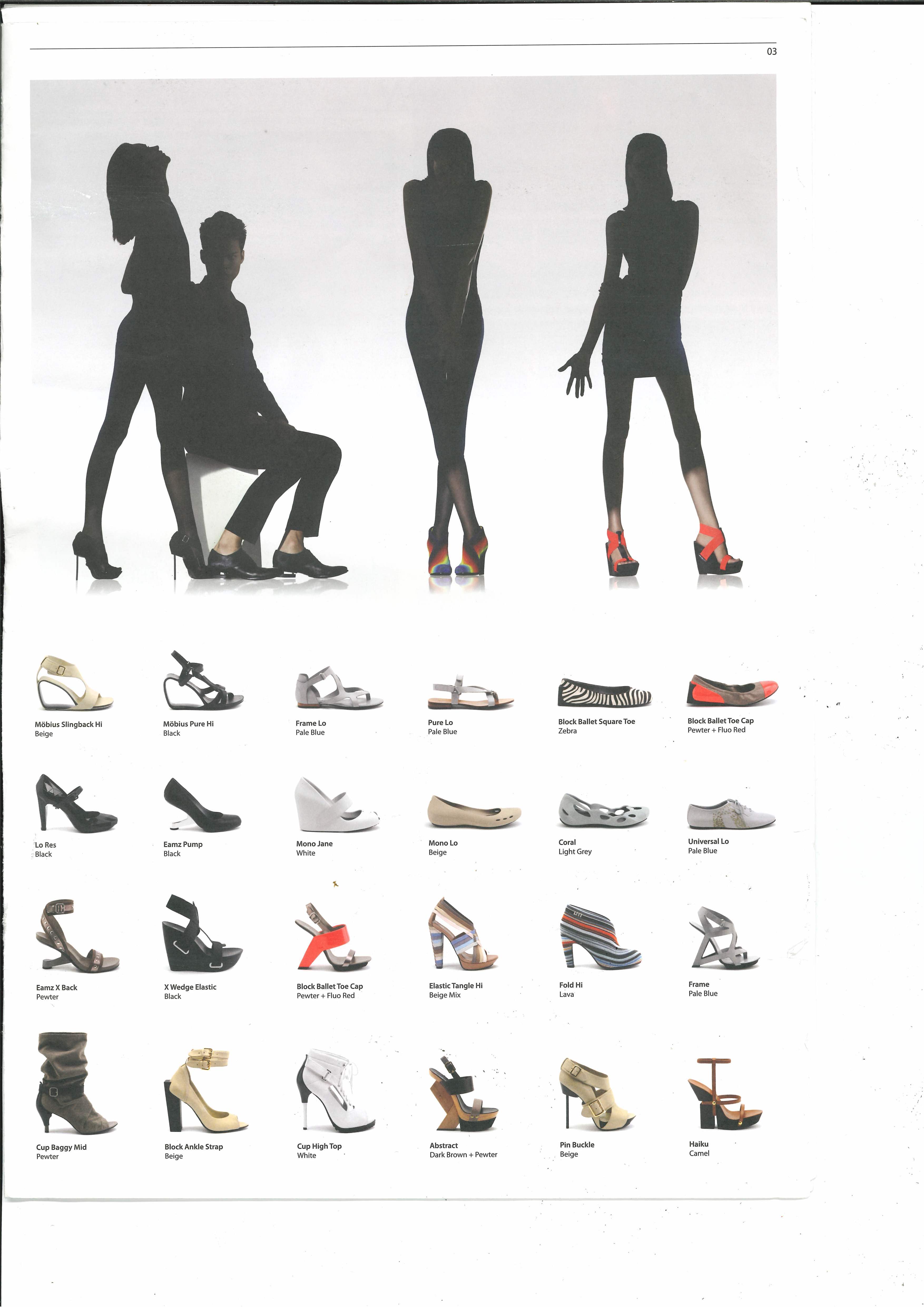Essay / 9 June 2025 / By: Eileen Slightly
Maiden Crimes: "The addictive determinism of Fetish"
Maiden Crimes (est.2025)
Matt Gess’s Maiden Crimes 1 (2025) and Militia (2025) were shown at Récréations a show by Gnossienne Gallery alongside work by Nayan Patel, Sasha Miasnikova and Jordan Derrien. View the project on Instagram here.
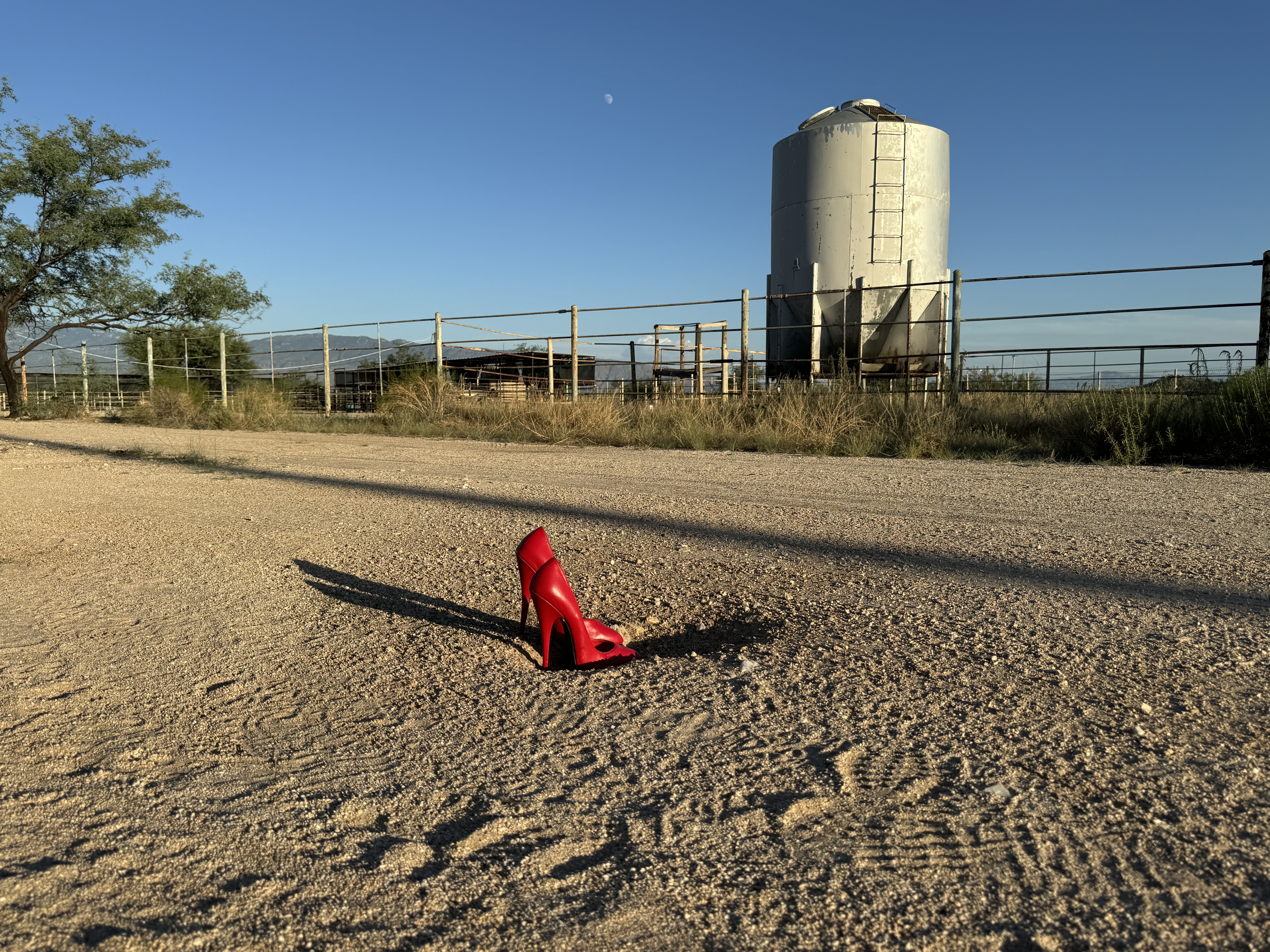
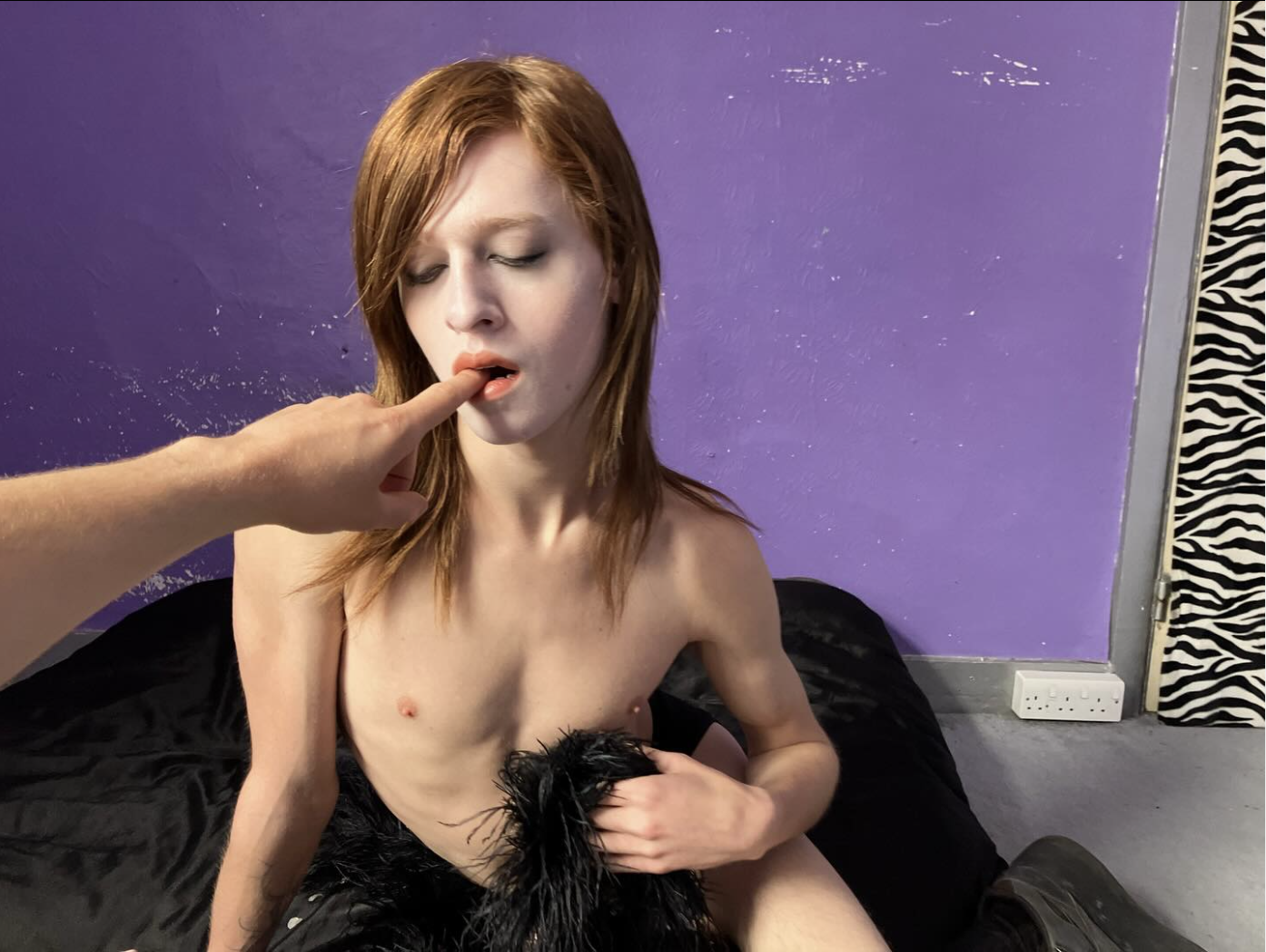
There’s something that can only be brought out by being locked away: this is the tension that suspends Maiden Crimes. "It’s about yin and yang", said [legendary erotic photographer] Eric Kroll to Matt Gess, who had tracked him down to his kitchen table in Arizona. Balance is a notion that applies just as much to the climbing of chain-link fences as it does to the ecstasy of constrained compositions; these are all driving forces behind Gess's work.
Coming across a Maiden is a revelation that makes the word casting appear sanitised and crass. “You know what Eileen? I think [NAME] might be a Maiden…” We cock our heads, squint our eyes and pout our lips at each other, considering the idea like we just tasted something new. What’s your taste? Matt describes things like trespassing as ‘delicious’. Maidens are discovered, they walk out of the water of their past dripping with becoming; like every crime, they are unique. For example: Maiden Kirsten was sitting on the pavement of Kingsland road, “parked outside Greggs, lipstick defiant”, “she styled herself, quickly stuffing a circus flyer in her bra”. Charlie Osbourne emerged to Matt in another way: the theatricality of her rigid and heartfelt musical performances. These are subjects Matt observes from the anonymous position of an audience member or passerby- Maidens emerge having built their own kinds of stages: Kirsten with her pile of street cardboard, or Charlie at the ICA... Maiden is a project that poses seductively in the field of surveillance, anonymity and consent; no wonder Matt calls it a ‘license to voyeurism’.
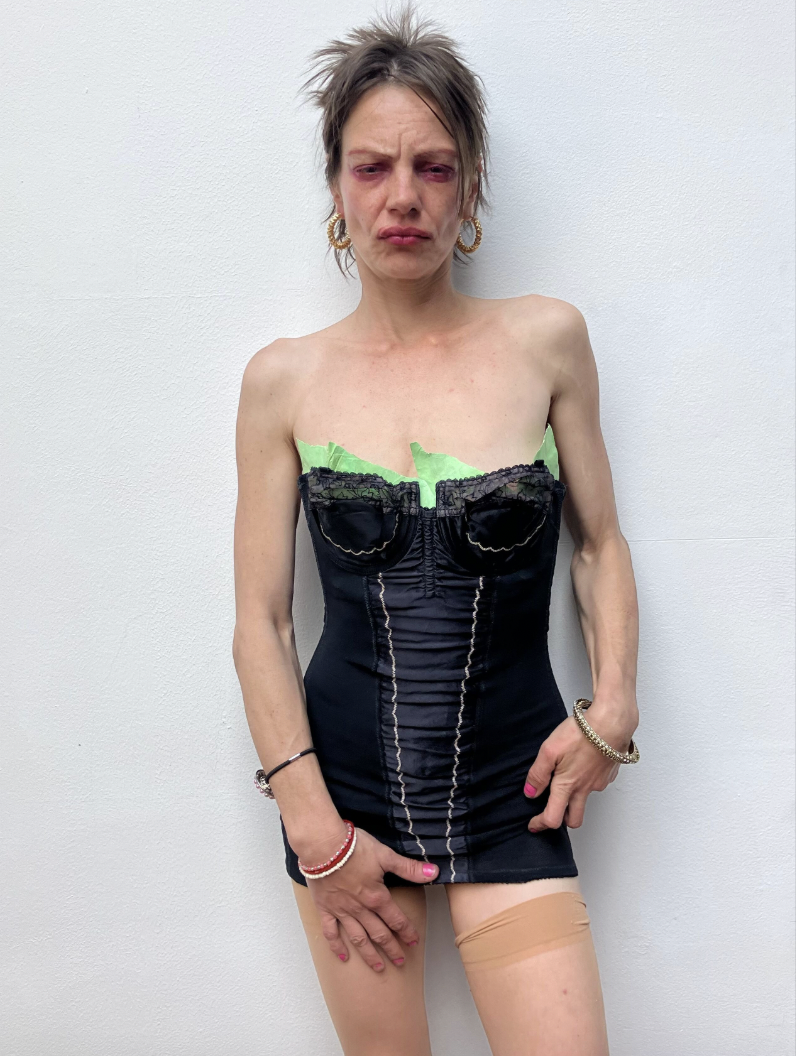
His spare captions under his instagram posts are tantalisingly partial origin stories: “I saw Vivi working behind an Irish bar in Helsinki two hours before my flight back home. I asked her if she wanted to come back to my room and play dress-up.” Matt turns to me, “She works in KFC,” he says, breathlessly, “it’s perfect.”
And this is the key to understanding why the pictures have the effect that they do: it is a fetishistic approach to the details of living, of being, that makes Maiden Crimes the realest. The fetish is not the black patent heels, the velvet mask or the nipple cover; it’s not the leather glove, or the absence of a lower arm, it’s not the top of a flesh coloured stocking or the 1930s girdle, or any of the objects Matt plays with - it is none of these things in and of themselves. It’s the focus of an eye on a singular point, it is the tension of bodily concentration until one’s mind empties: not falling from the platforms; the explosion of a stepped-on grape; the expression of breath into an instrument and its contortion into sound, it is the narrowing in on a target until it is the right moment to squeeze the trigger… “you know when you shoot someone you say: I’m going to shoot this person. And it’s like what? With a camera or a gun? It’s the same thing.” This violent metaphor is appropriate for an artist whose alter ego Claudia Speed comes from the protagonist of Grand Theft Auto II.
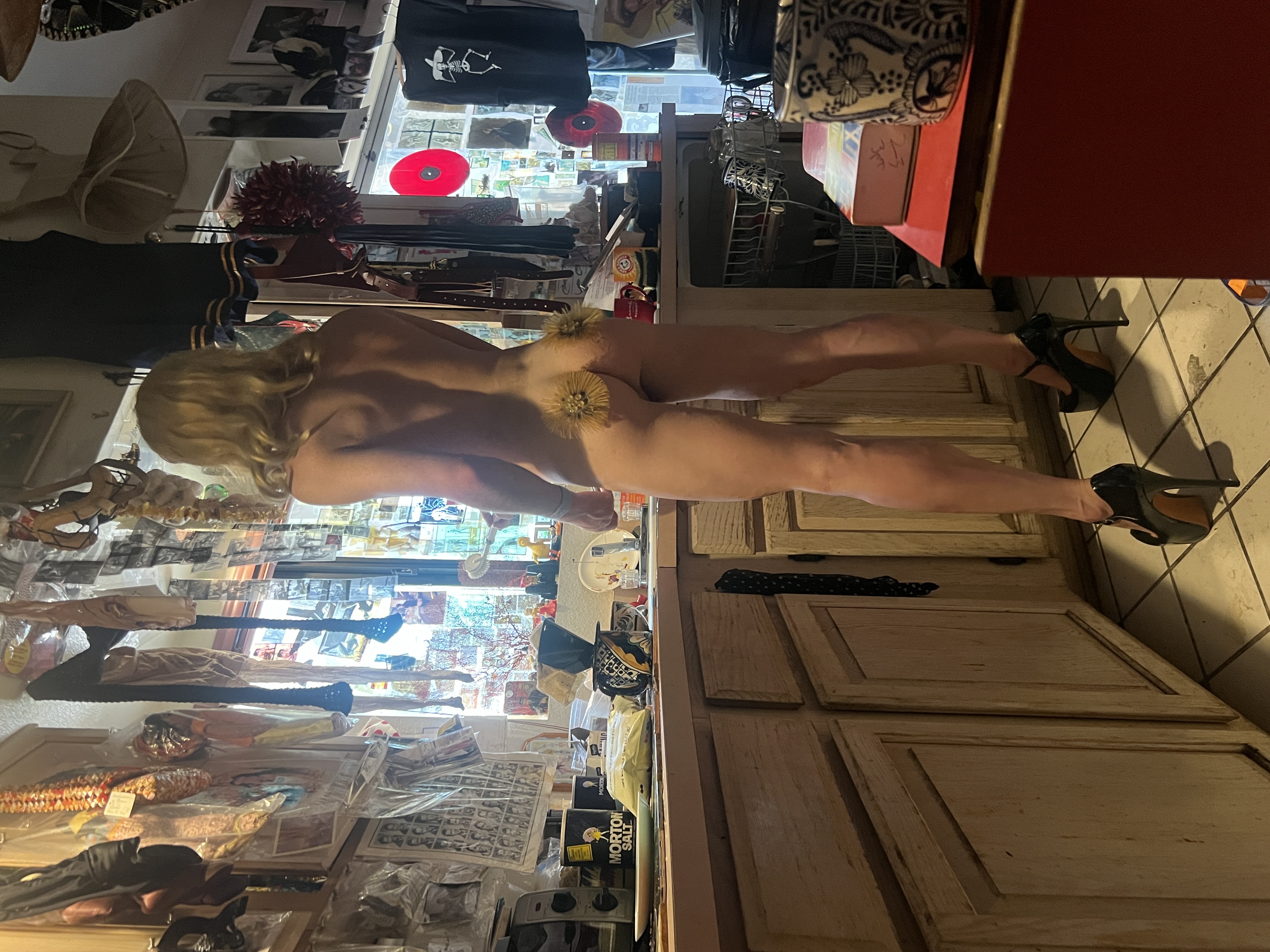
Perhaps it is enough for now, to simply say that the fetish look invests objects with a magical coercive power over individual subjectivity. Matt’s work recognises the addictive determinism generated by Fetish. Careful arrangement of objects set in motion a sequence of events: female clothes on a male body creates certain life-situations. Cross-dressing in West Hollywood, Matt says, “I would find myself climbing over chain-link fences”. L.A plays itself, life seduces itself, one thing leads to another…
“When I was cross dressing and going to these strip clubs I’d literally be getting into these cars with these men and climbing these fences. It wasn’t always sexual. I love iron gates and what it represents of being locked away, and I think that kind of came from growing up in South Africa- the gated compounds with security and it was always just like quite fascinating and really beautiful because you’ve kind of got like these illuminated swimming pools and these big like chunky gates that have, like, electricity going through them.”
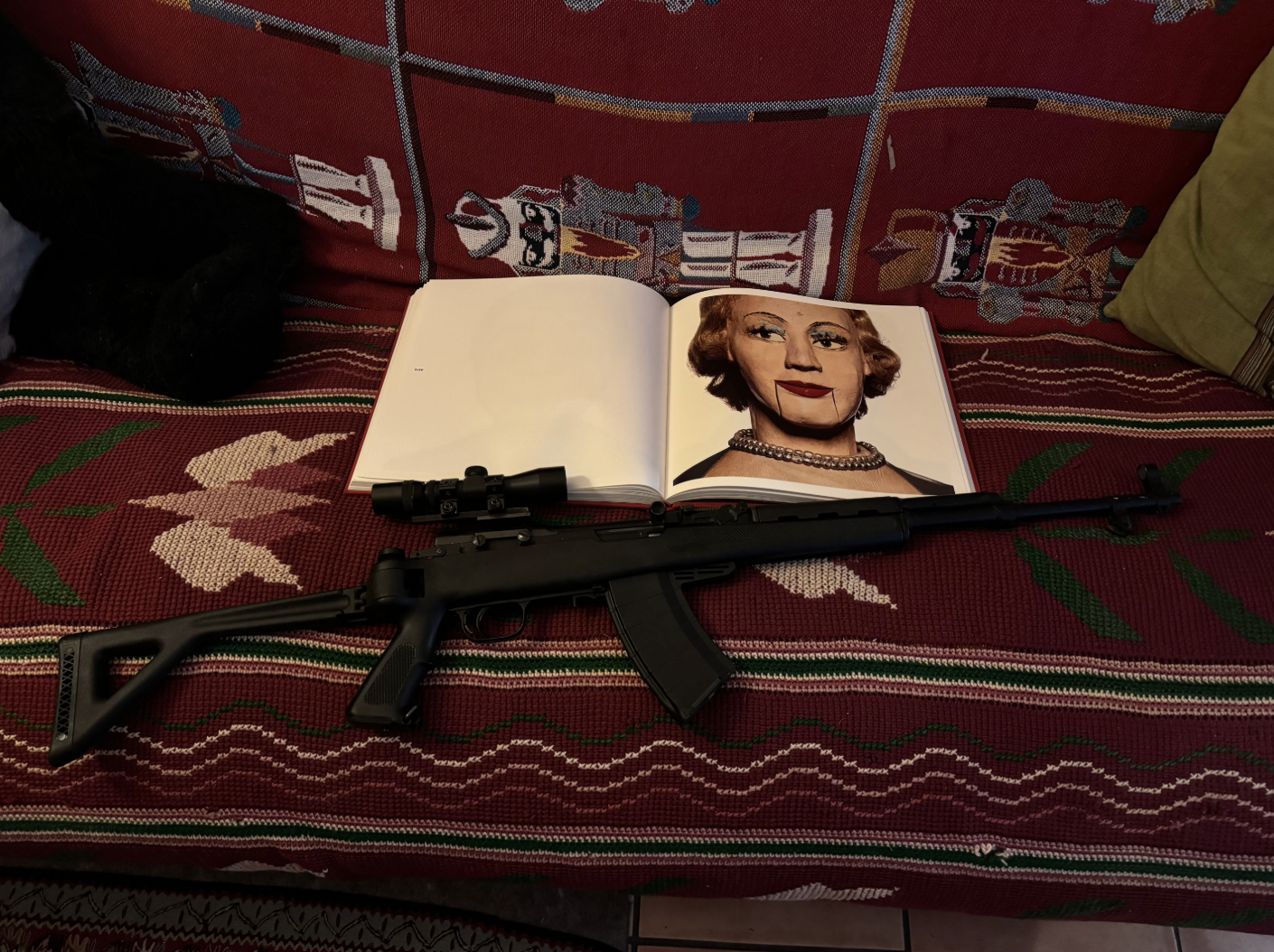
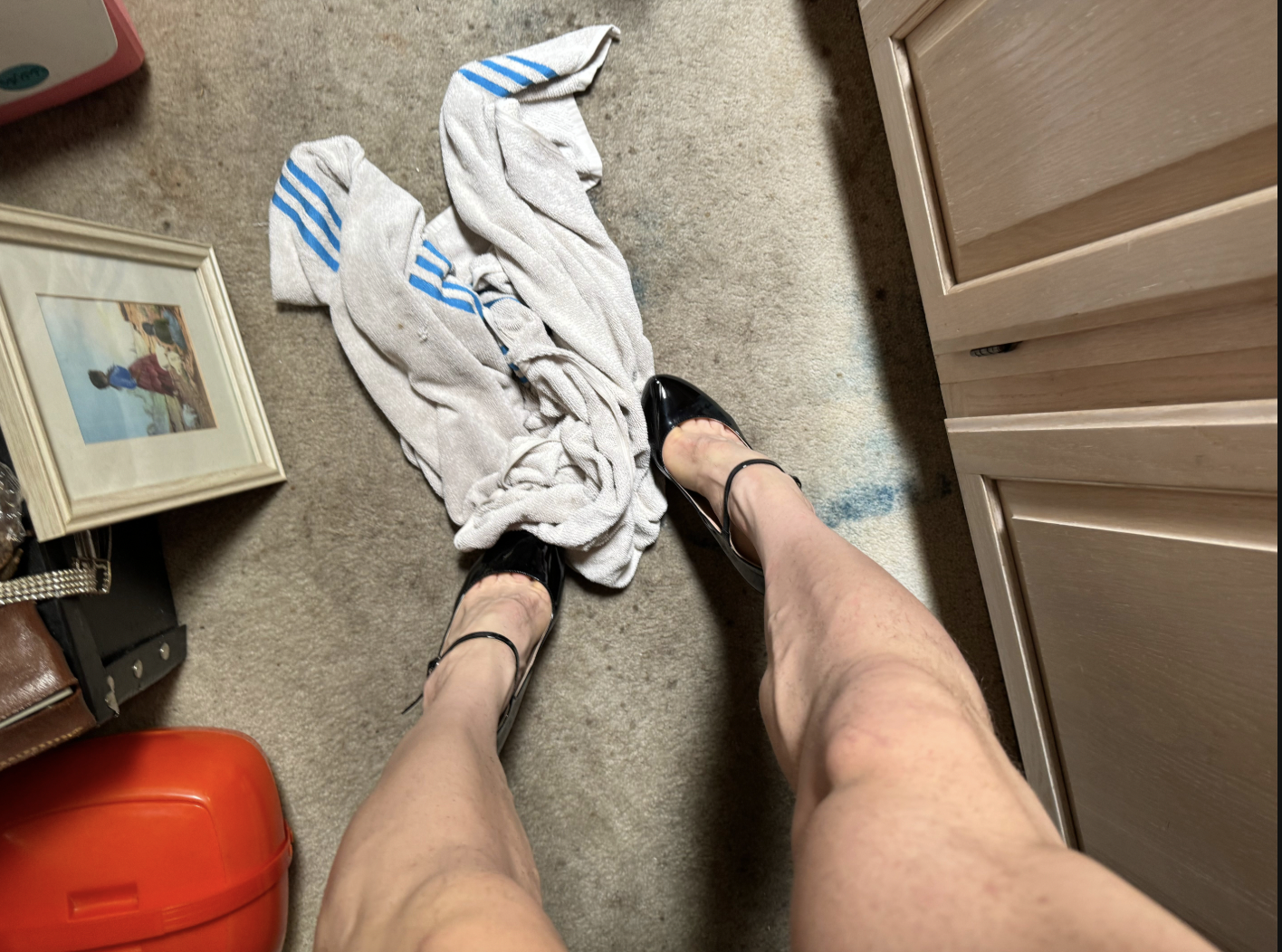
Apart from the strip clubs of Hollywood, there is another cinematic influence on the project. In his room in East London, Matt’s nameless Canary likes to perch on his stack of Alan Clarke DVDs. The Yorkshire-born director (1935-1990), whose later minimalist works on topics such as the miner’s strike, Road (1988); childhood heroin use, Christine (1987) and the Troubles in Ireland Elephant(1989) gave the violence of British Social Realist Cinema the Bressonian purity, precision and appeal of a finger dragged across skin, the sound of a dress being unzipped. The video of Osbourne in a prim buttercup-yellow dress spinning and playing her harmonica iconica, is a performance that would not have been amiss from the legendary party scene in Road. There is a clear fascination in Crimes not just with the acting in Clarke’s films, but the social-psychological aura emitted through the stripped-back nature of the sets. Their cheap plain kitchens and unplastered walls, like the pale, rail-thin bodies of Maidens, captivate in their austerity. There is a tension of set and character; history and choice: between the purple pub carpet and aubergine hair; neglected linoleum and patent heels, of weathered junkie skin against orange brick. Clarke’s protagonists and Matt’s Maidens are aesthetic creations that both tenderly embody and fiercely rebel against their surroundings.
We are in a borrowed mansion in Epping Forest, surrounded by chintz and framed photographs of an English family where the mothers wear pearls. Matt is preparing the room, where, in two hours’ time, he will shoot Maiden Rafe. Elusin’s song, silhouette, fills up with the room alongside the smoke machine- the shoegaze haze activates the power of the objects thrown on the bed: Mickey Mouse mask; Eric Stanton Book; black caged hoop skirt; patent heels size 10; a single white gym sock (photographer’s own). Ignoring the still life he had been arranging on the floor, Matt turns to the assemblage on the bed: “accidents are the whole point.” Whilst the shoots are planned carefully, there is a refreshing lack of career-calculation to Maiden Crimes, “I have to hide my phone after I post.” Matt tells me, “quite a few stylists have got in contact, which is nice of them, but a certain part of me is just like… fuck off?”.
This is why Matt’s photos stand out from the scroll; as we are inundated with digital pornography, the analogue fetish adventure endures…
